“The divine in me bows to the divine in you” is the universal greeting in Nepal. Young and old, hands in prayer at the heart, nod to each other and to outsiders in a sign of recognition of oneness.
Nepal is a cultural mosaic of about 60 ethnic groups speaking over 120 languages. 
Rather than having assimilated each others customs, they have learned to coexist.
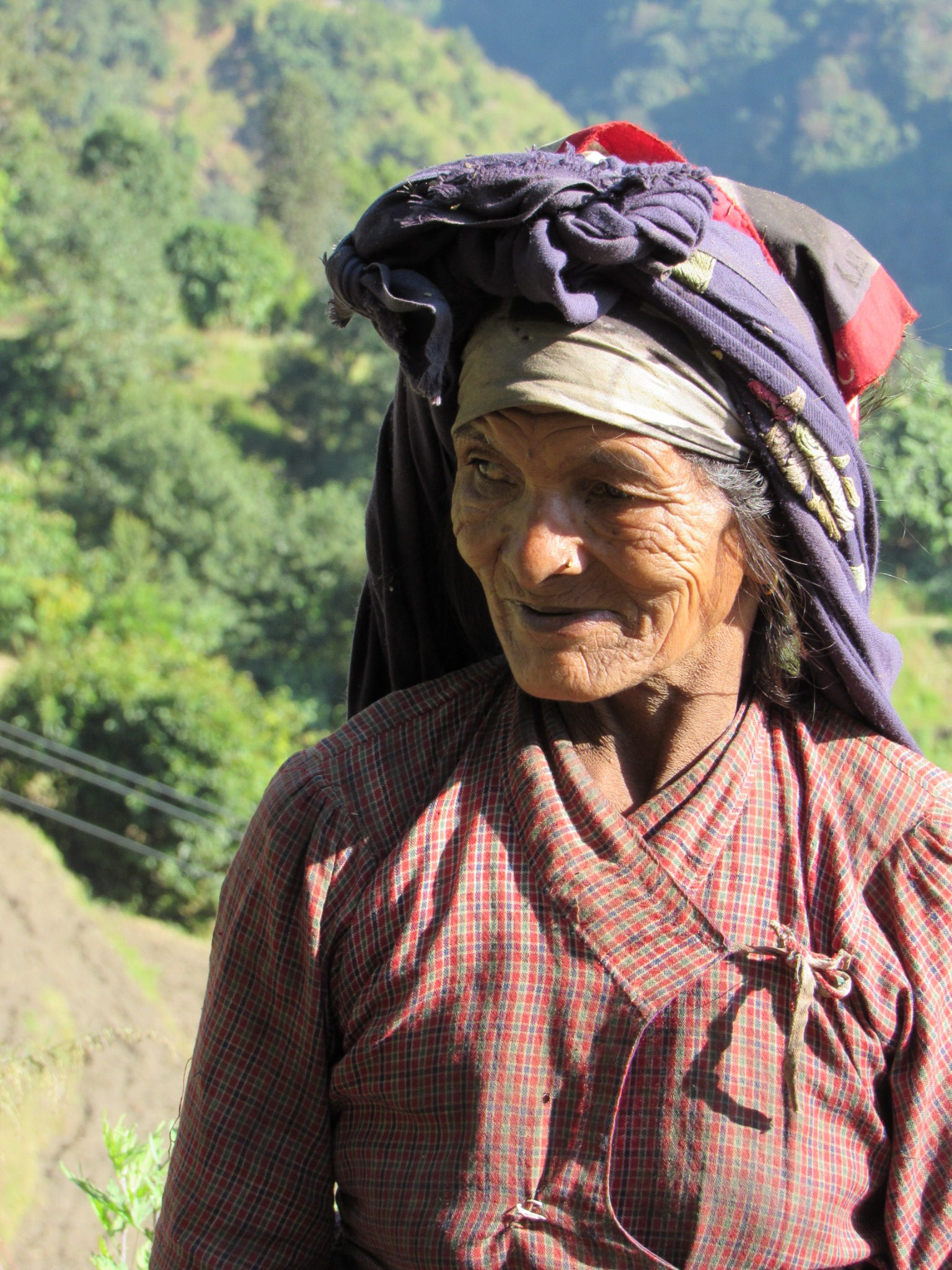 They are tolerant of each others religious beliefs, very hospitable and quick to smile.
They are tolerant of each others religious beliefs, very hospitable and quick to smile.
Theirs is more the yoga of the spirit. The energy of the mountains creates a sense of grounding and peace with what is. Hours of solitary walks up and down the paths bring into balance, body and mind.
Their view of the world is dominated by prayer and ritual and the belief that the gods are not abstract but fully present in daily life influencing things in direct ways. Karma and caste combined with a disfunctional government create a sense of fatalism. Soon come…as we say in the islands…
In Kathmandu valley where the pace quickens, electronic devices and the conduct of daily business competing for tourist dollars create a different feeling. But in the countryside there is no need to hurry.
While days are spent building, tilling or herding, when the sun goes down, the music comes up. Whether on a phone satellite connection, or to the accompaniament of a madali, the Nepali drum and a four string instrument known as the tungna, singing and dancing enlivens the evenings.
Near the University campus young couples spill out of cafes laughing hand in hand just like in any western country. But outside of the city these intimate relationships can be very different. The majority of the people still live by traditional customs and principles and ones family and ethnic group is strictly honored.
Photo by Arazu
While in the Sherpa families gender equality is mostly a given, in most other societies, women only truly gain status when they bear their husband a son. In an interesting book on this subject “While the Gods were Sleeping”, American anthropologist Elizabeth Enslin recounts her life as the wife of a Brahmin.
Nepalis are kind and gentle people. From the Sherpas of the Khumbu region, to the Gurungs of Pokhara, the Tamangs of Langtang or the Newars of Patan you will be met with a smile and a twinkle of curiosity in the eye.
The people of the high Himalayas are mostly of Tibetan descent and are Buddhists.
Stupas and prayer flags adorn the mountainsides…
with the occasional Nyingma Buddhist shrine, the old school which incorporates local religious beliefs and shamanism.
The economic bedrocks here are yak herding and barley harvest.
Sherpas, the easteners of the Everest region, are probably the group best known in the West. They are associated with mountain climbing and are often guides or owners of travel agencies. Kaji Sherpa, my quietly protective guide in Langtang, on one of our teahouse stops shows me on his phone the documentary – “Sherpas- The True Heroes of Mt. Everest.”
The young are proud of their heritage but the smart phone connection that is surprisingly available in many areas, is slowly imbuing them with a new sense of freedom.
Sarki Sherpa, our trekking guide on Mardi Himal tells me with satisfaction of Pasang Lamu Sherpa who became the first Nepali woman to climb Mt. Everest. Sherpa names make no distinction in gender and women in the Sherpa culture often run the show.
To the north of Kathmandu, up to the border with Tibet are the Tamangs.
Here a strong Tibetan influence can be seen from their monasteries, the ghyangs…
….to the mani walls at the entrance to their villages.
Their villages are high on the mountainsides and while their ancestors were horse traders today they mostly practice subsistence farming and herding.
….although many are carpet weavers or thangka (religious paintings) artists
Gurungs, of Tibeto-Burmese descent live mostly in the central midlands of the Annapurnas region. Ghundruk and Pokhara are their largest settlements.
The views from their villages are always spectacular.
In the Kathmandu valley live the Newars, excellent farmers and merchants, and gifted artists.
Their capital Patan, also known as Lalitpur the beautiful city, is full of wonderful examples of their architecture and craft. Every little street and courtyard is a work of art.
In the south, the Terai which borders India, live the Tharus.
Having originally settled in what is now the Chitwan National Park, they build their huts with wattle and daub walls and cover their roofs with elephant grass. Once a year they are allowed into the park for two weeks to harvest the grass.
Most of them work as wild life guides and rangers in the park. Chitwan covers 932sqkm and is a Unesco World Heritage site with 68 different species of mammals. Our highlight is the sighting of a rhino, now one of more than 630, points out our guide.
The hot sub tropical plains of the Terai are home for many different ethnic groups that have migrated here attracted by fertile soil and easy accessibility. Half of the population of Nepal lives in this narrow belt between the mountains and India.
It is often said that while you first come to Nepal for the mountains, you return for the people…
And so it is… When I think of our guides, the teahouse and shop owners along the way, the blind masseuse Laxmi of Seeing Hands and the children at the Shining Stars Home and the Sri Aurobindo orphanage, I know my heart will bring me back here one day to continue exploring and seeing more of the divinity of the beautiful Nepalis.
.
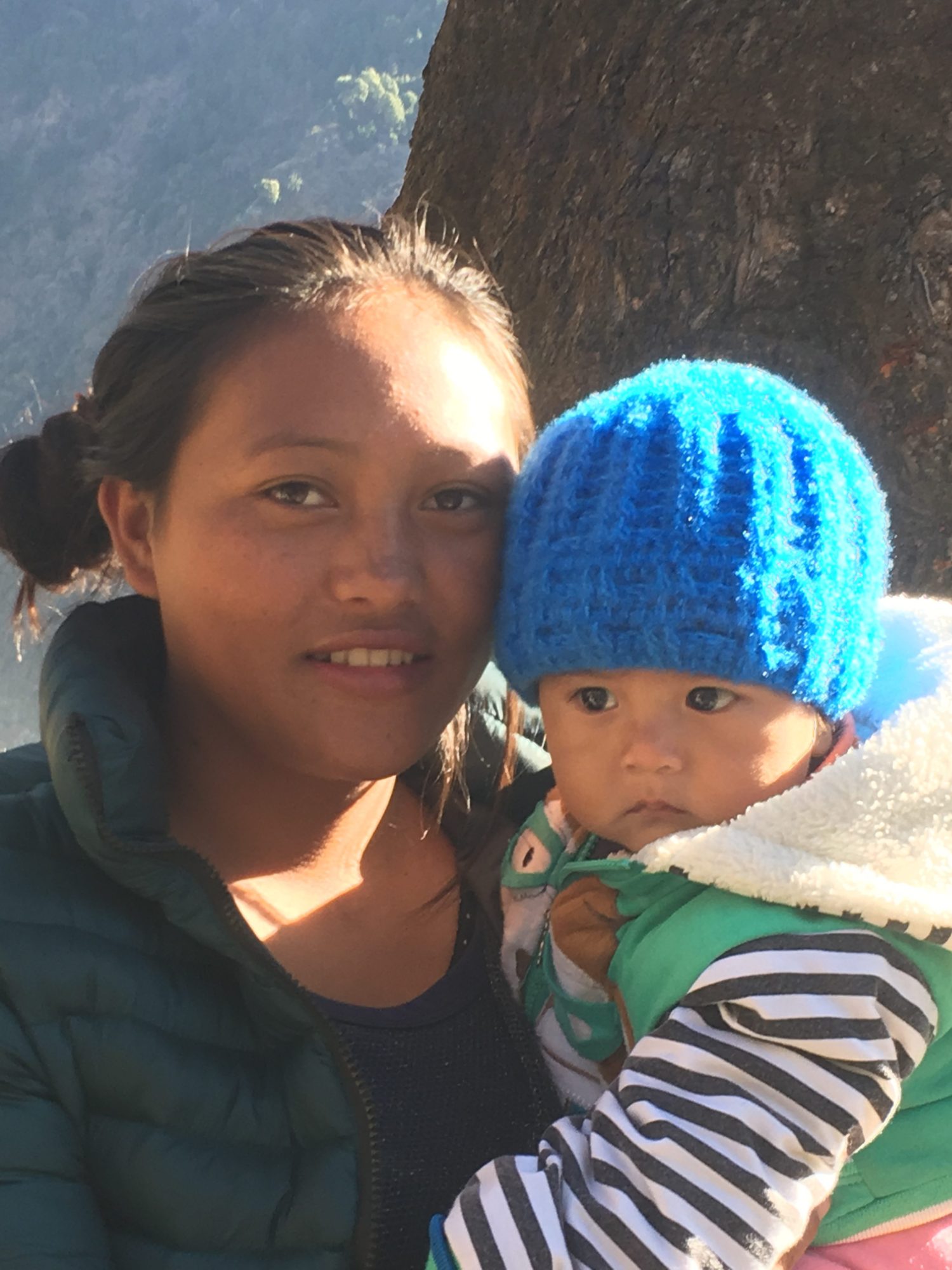
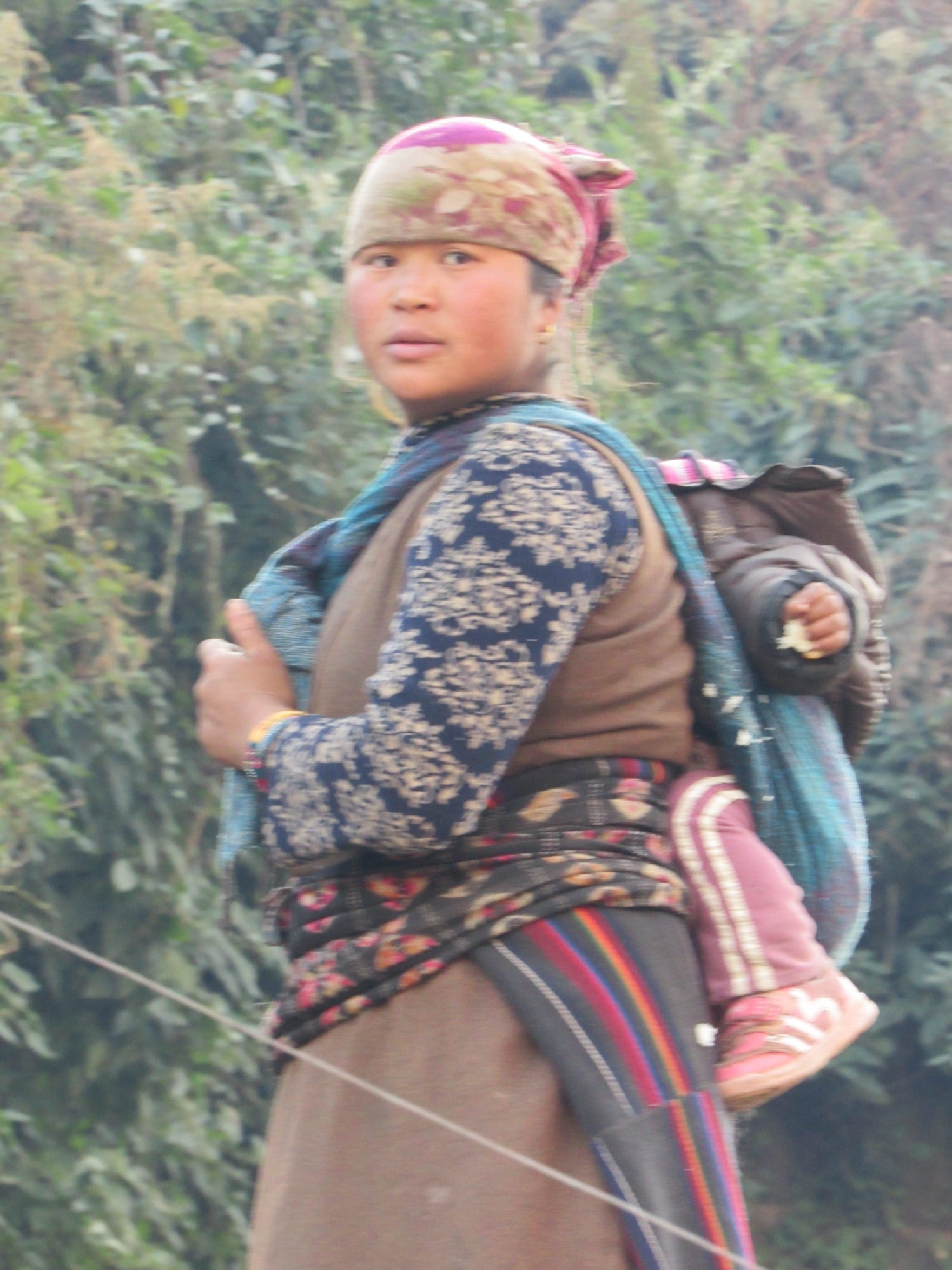
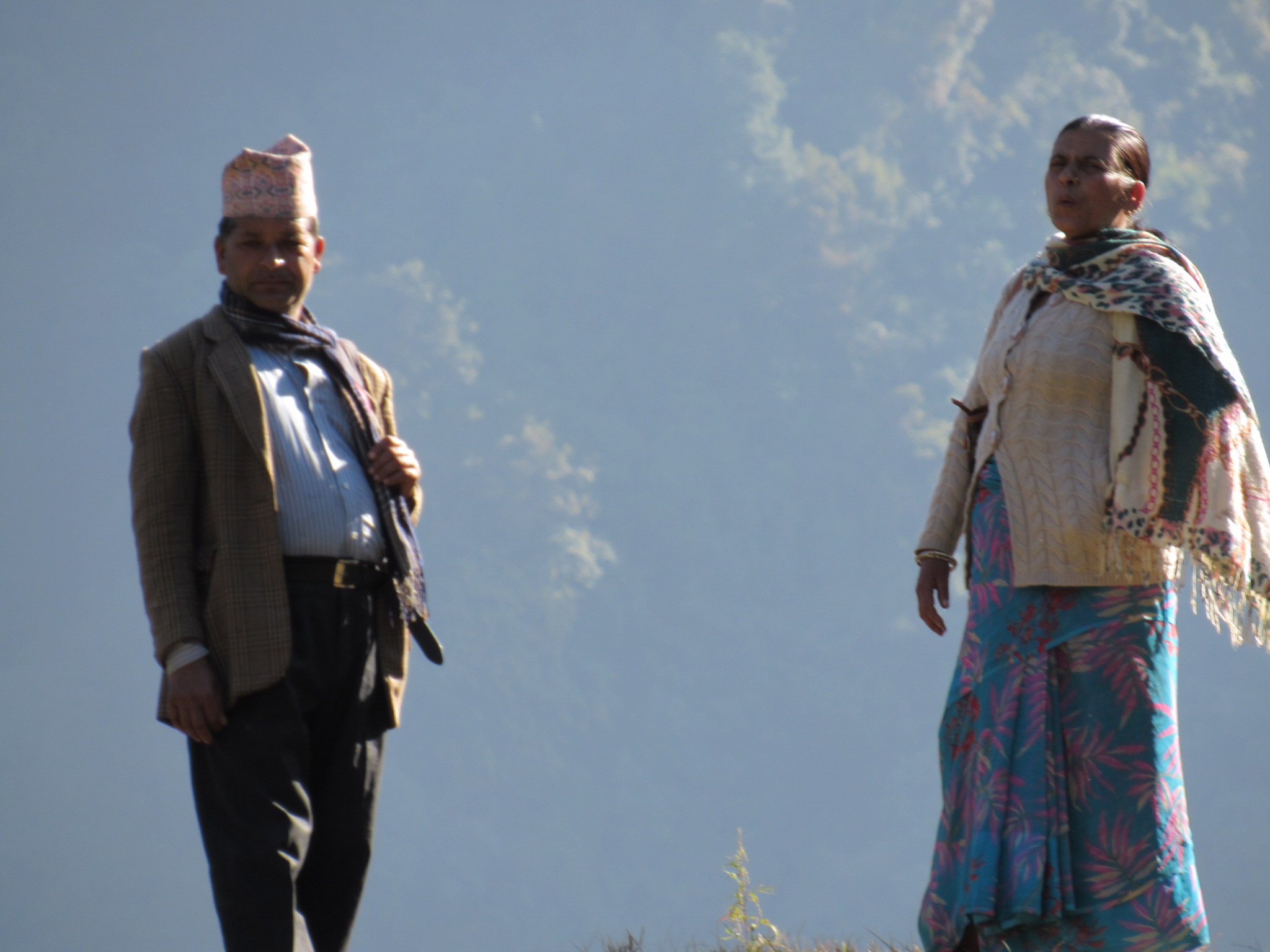
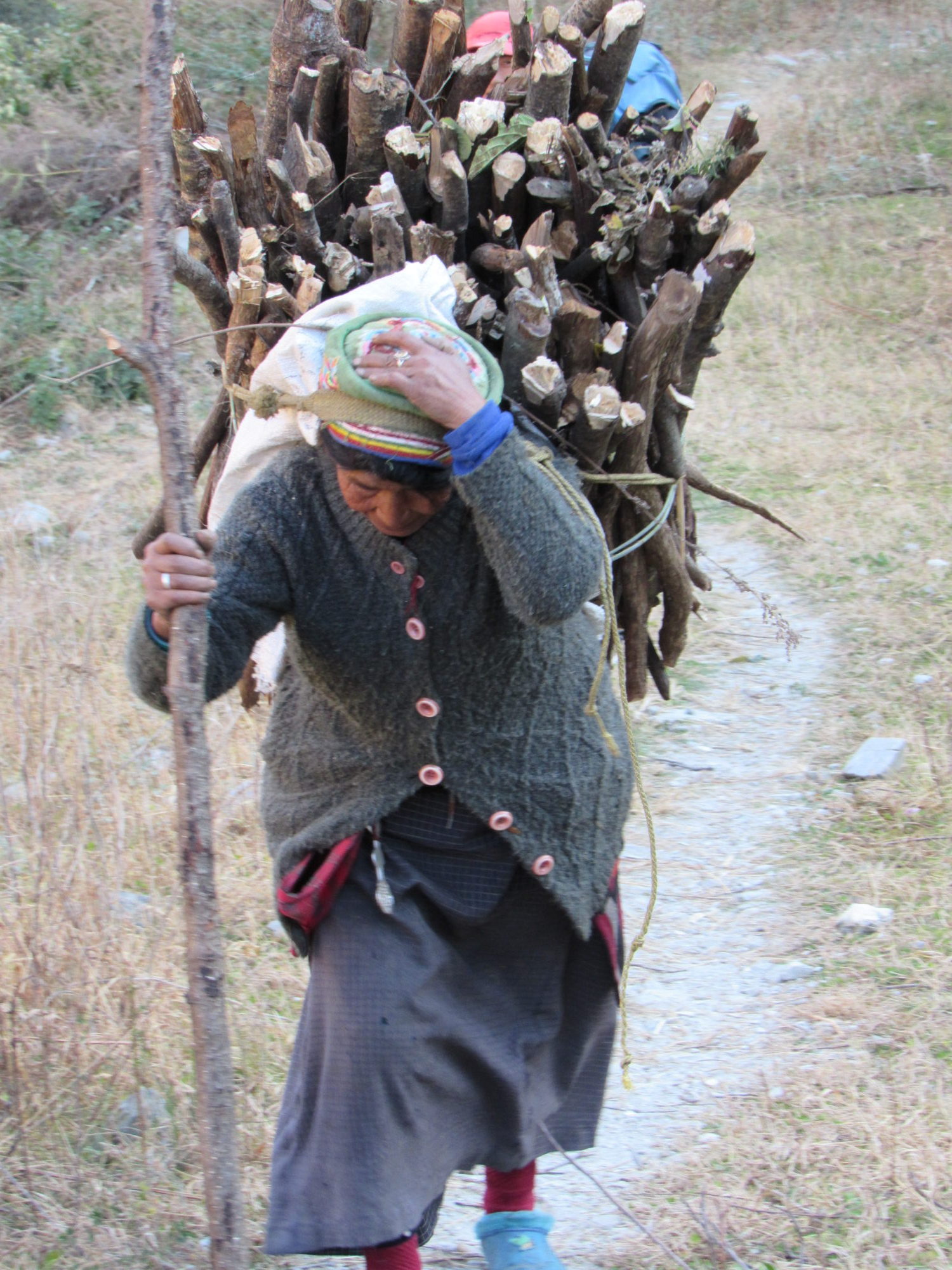


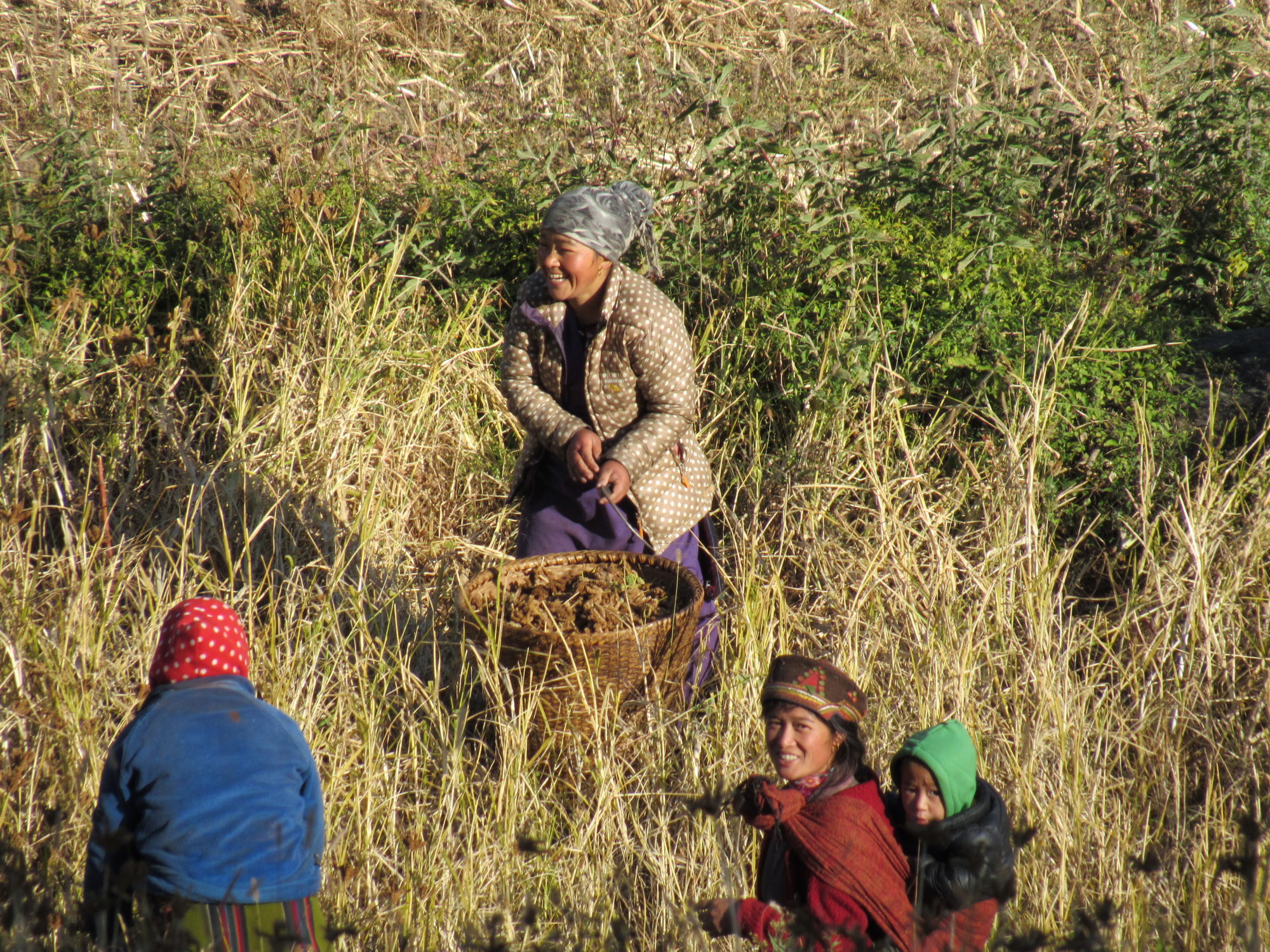
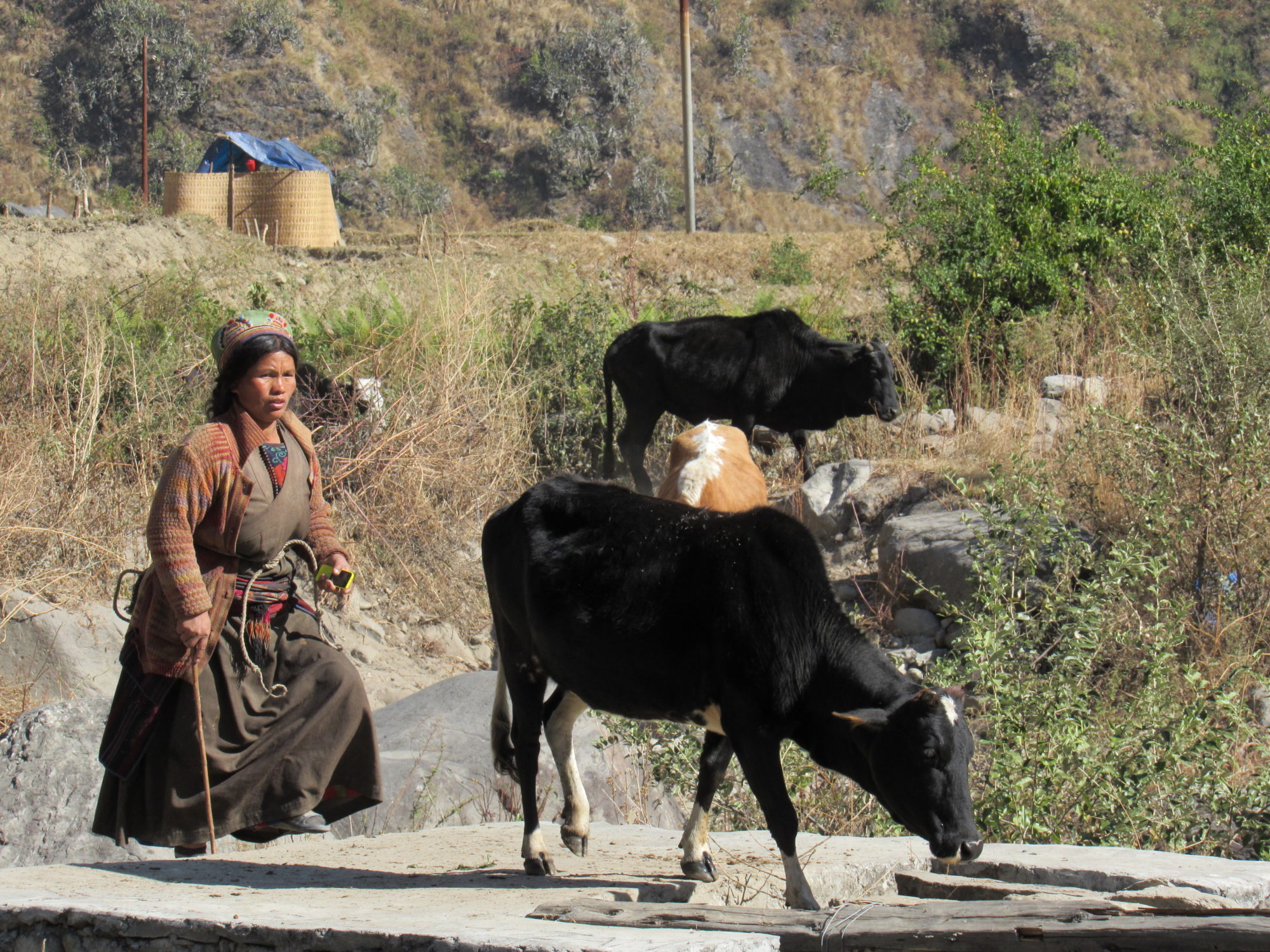


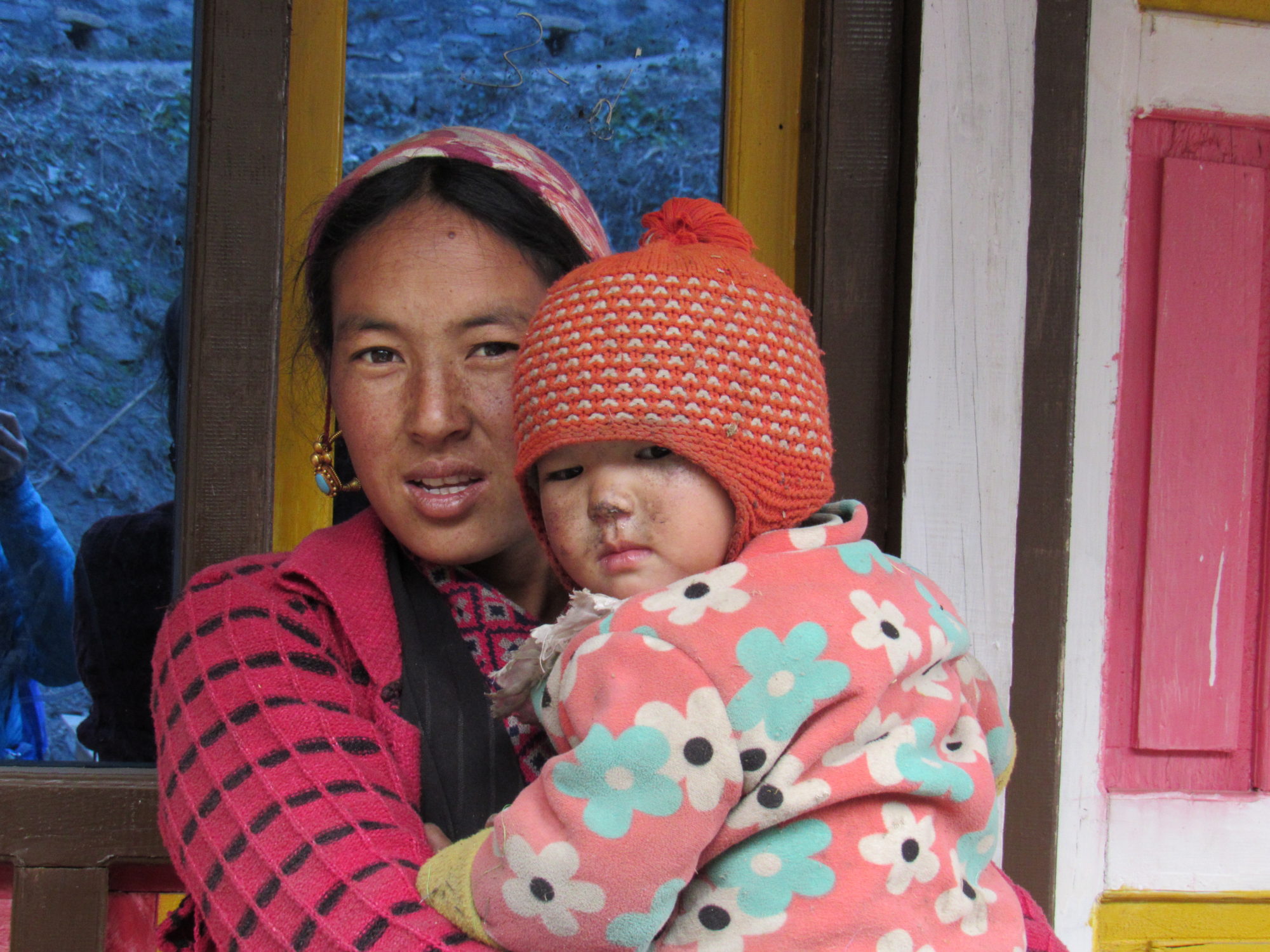

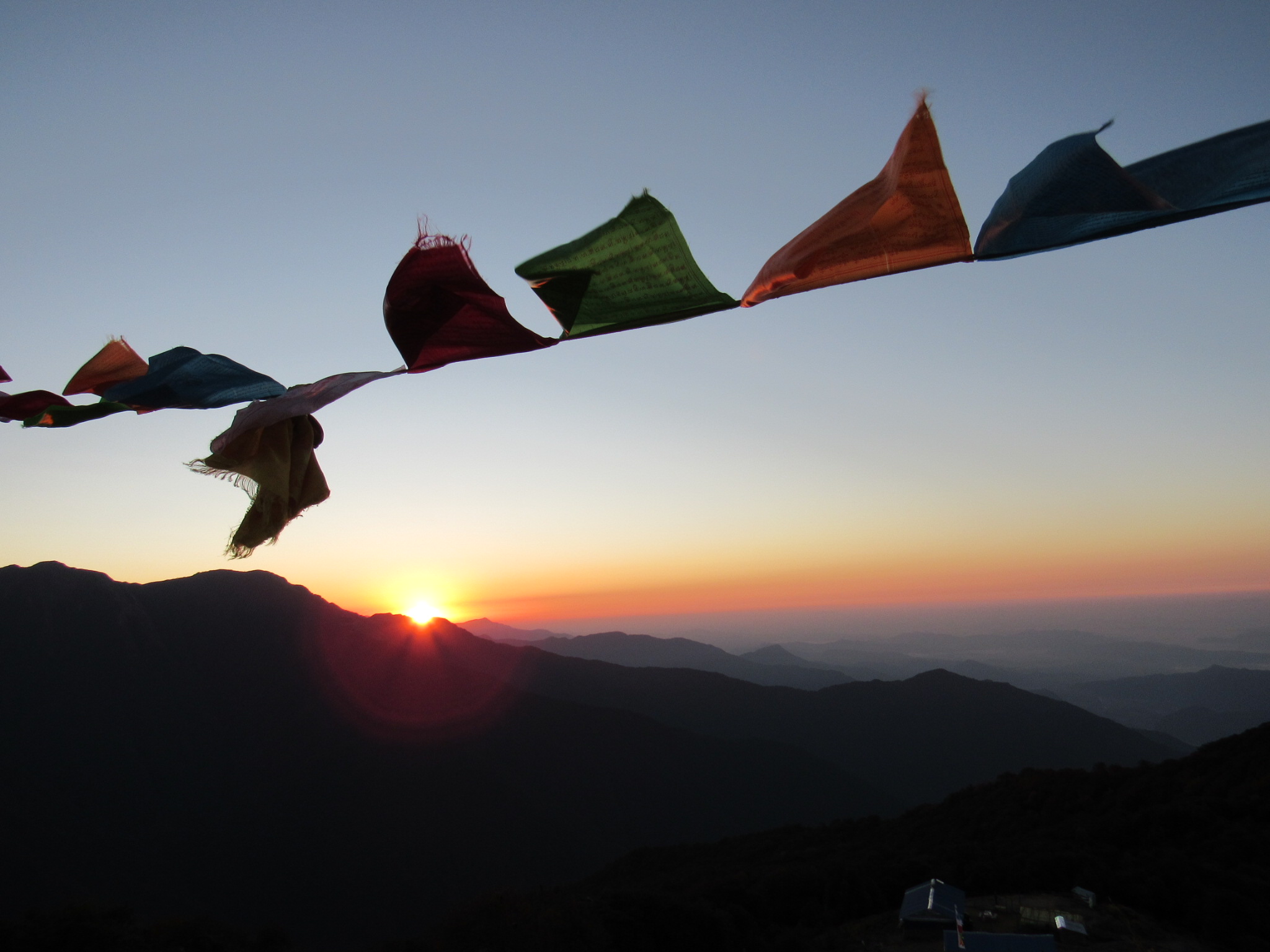
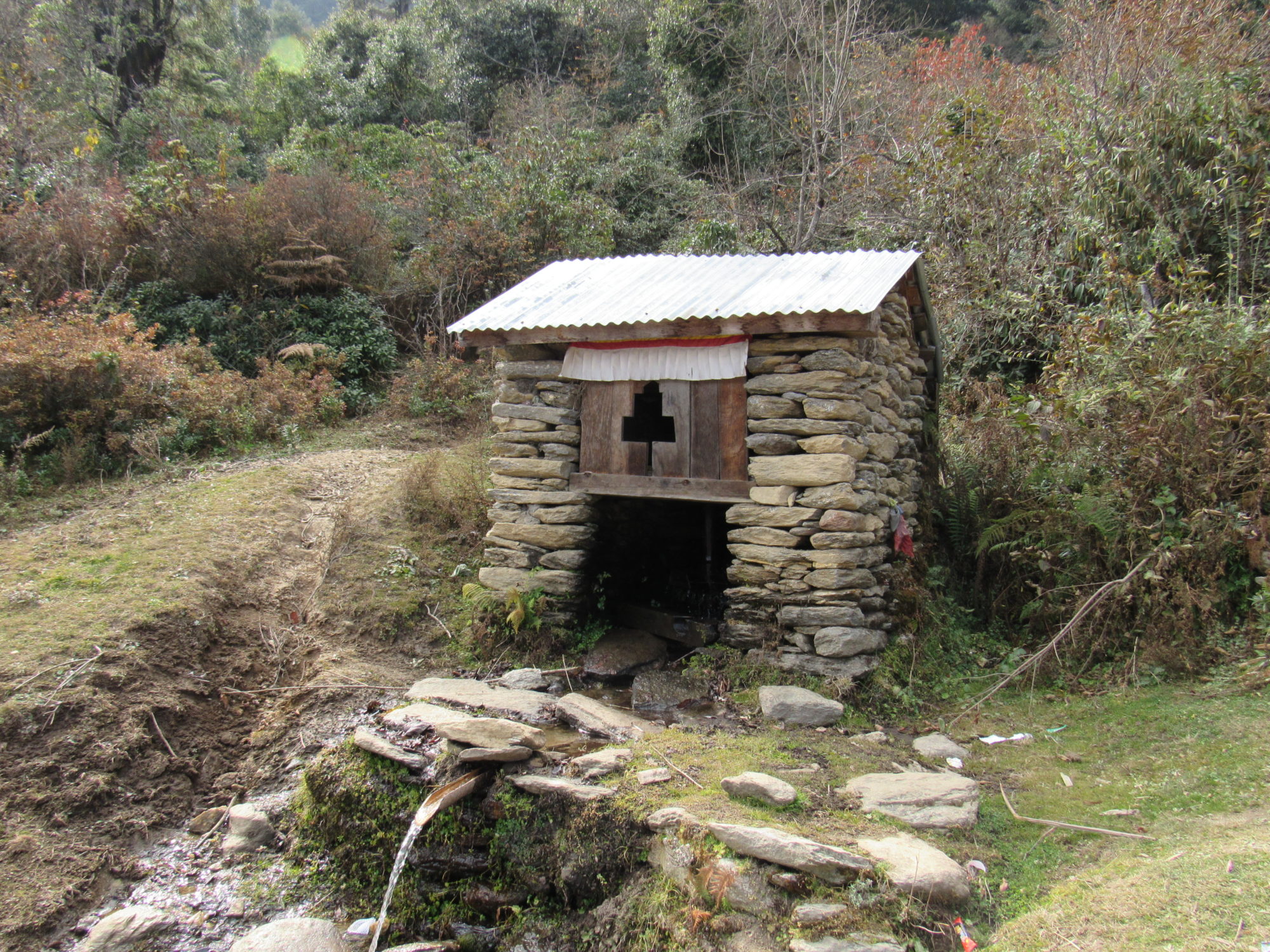
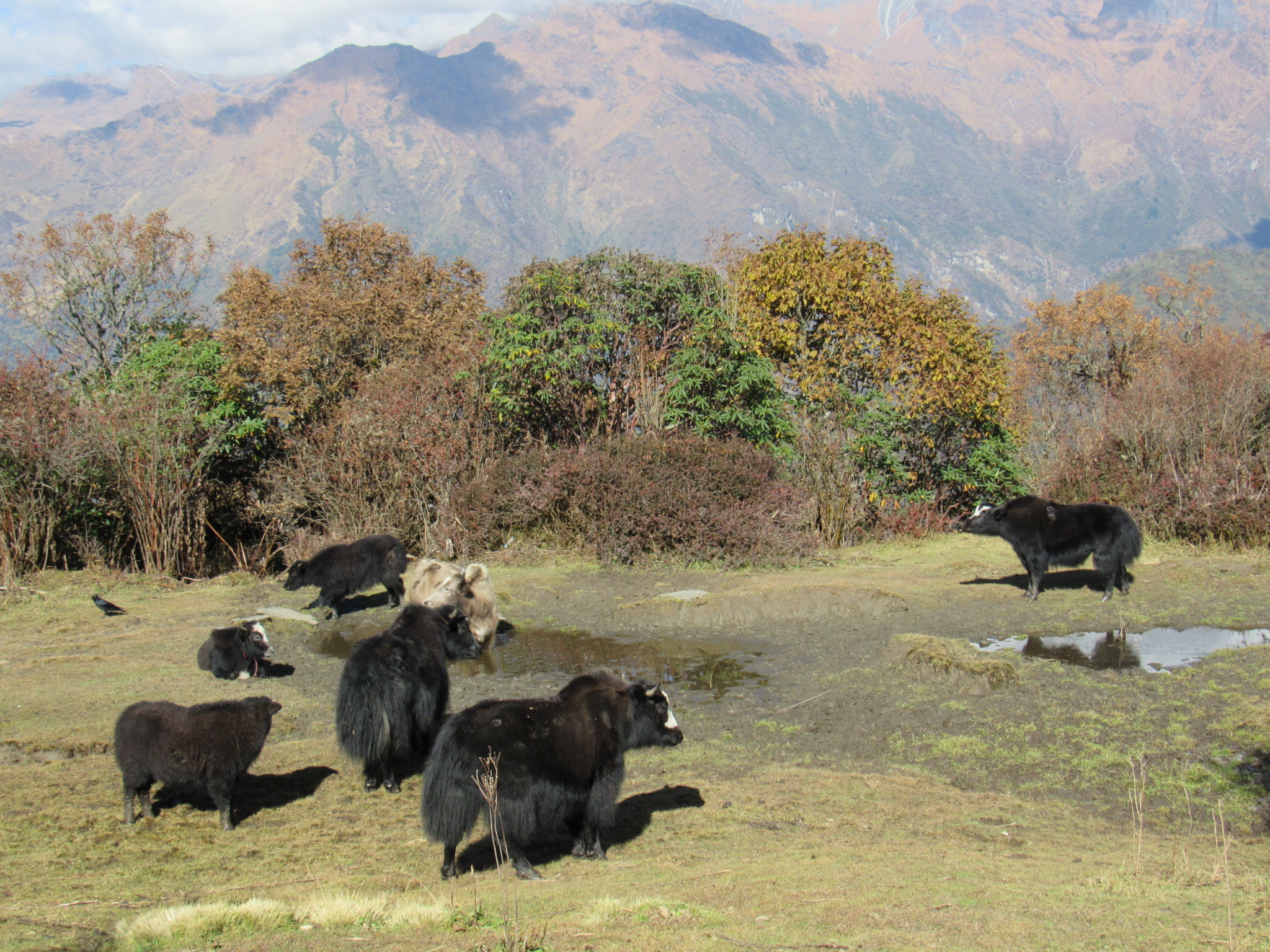
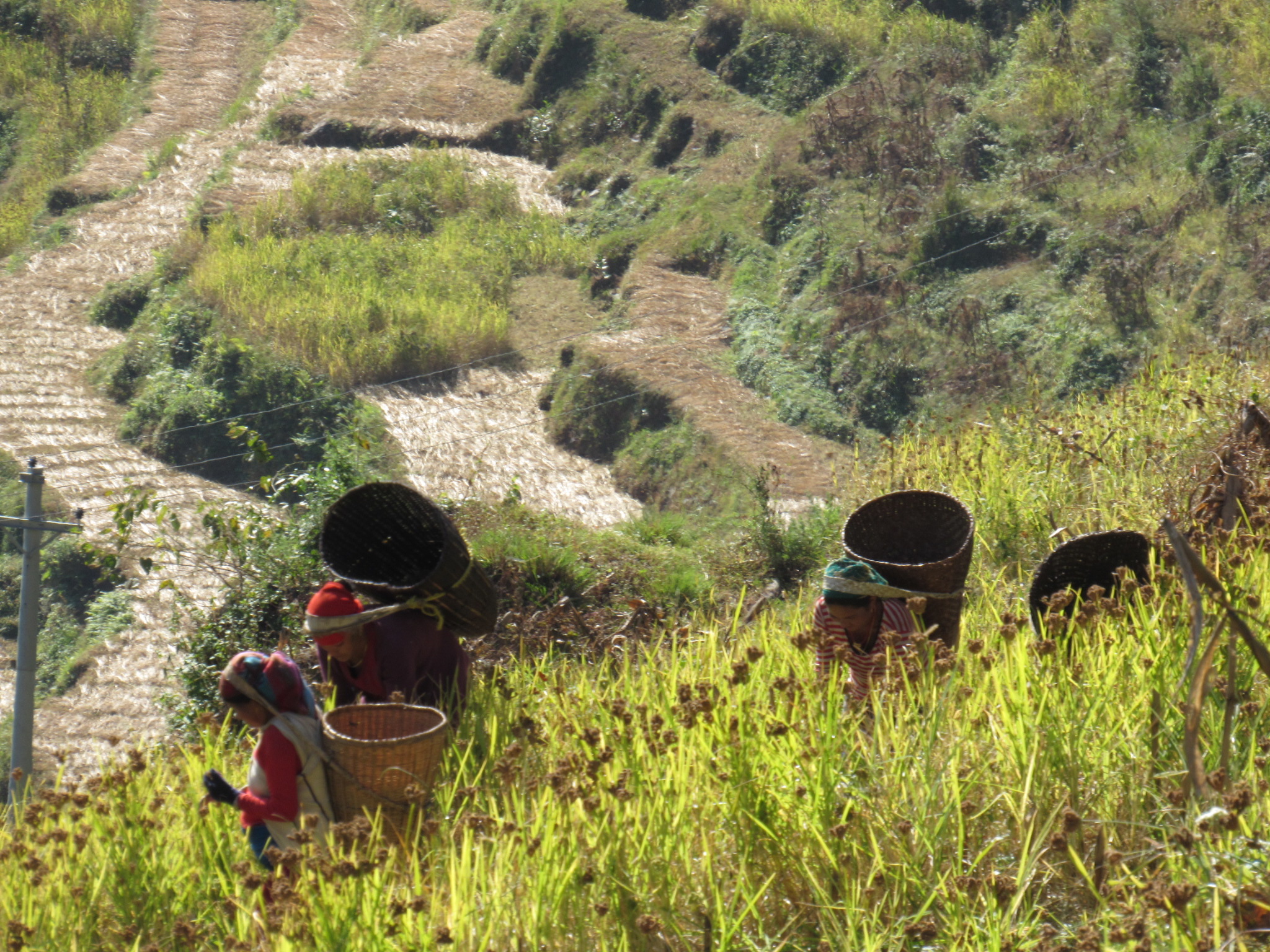

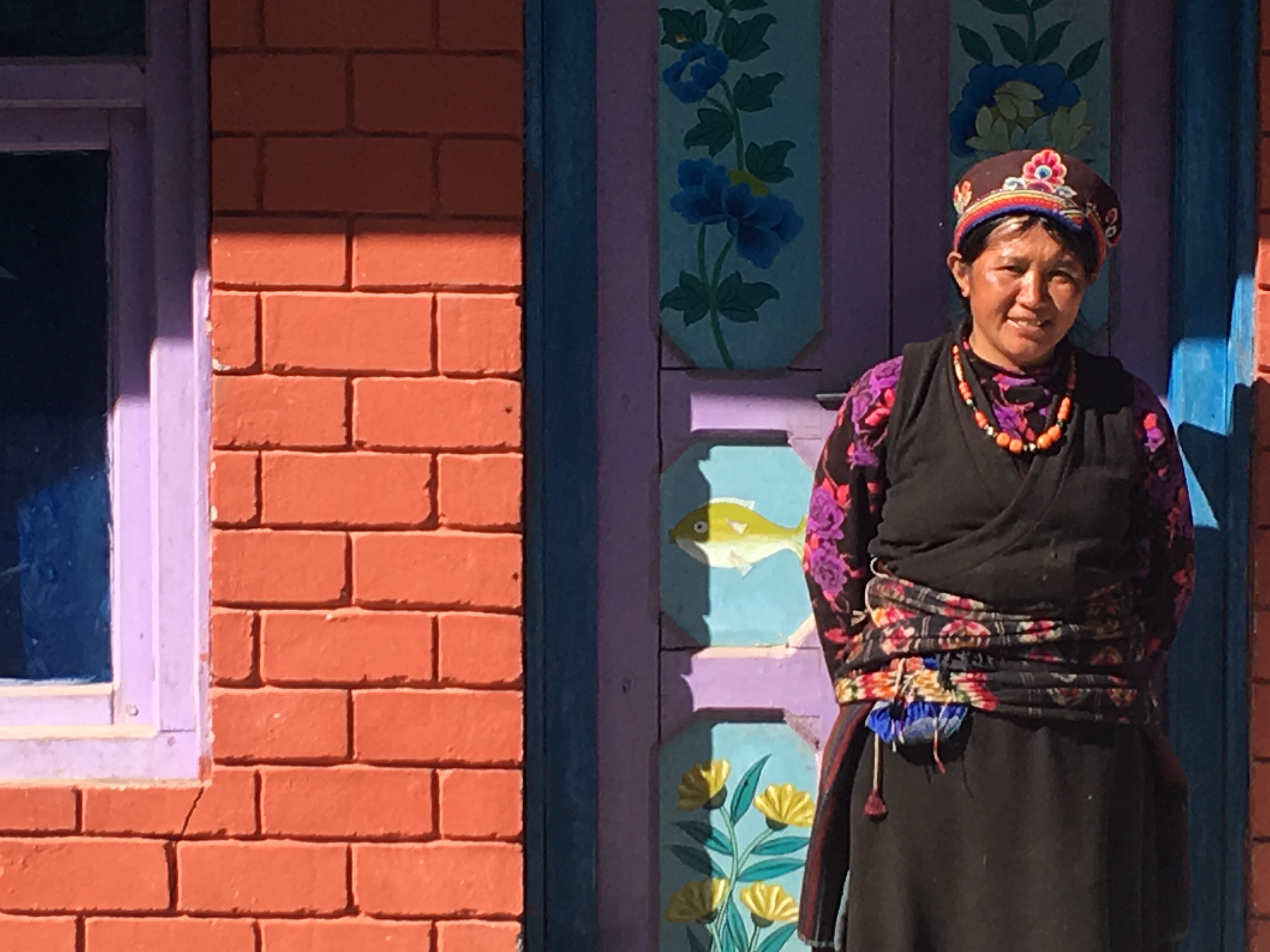

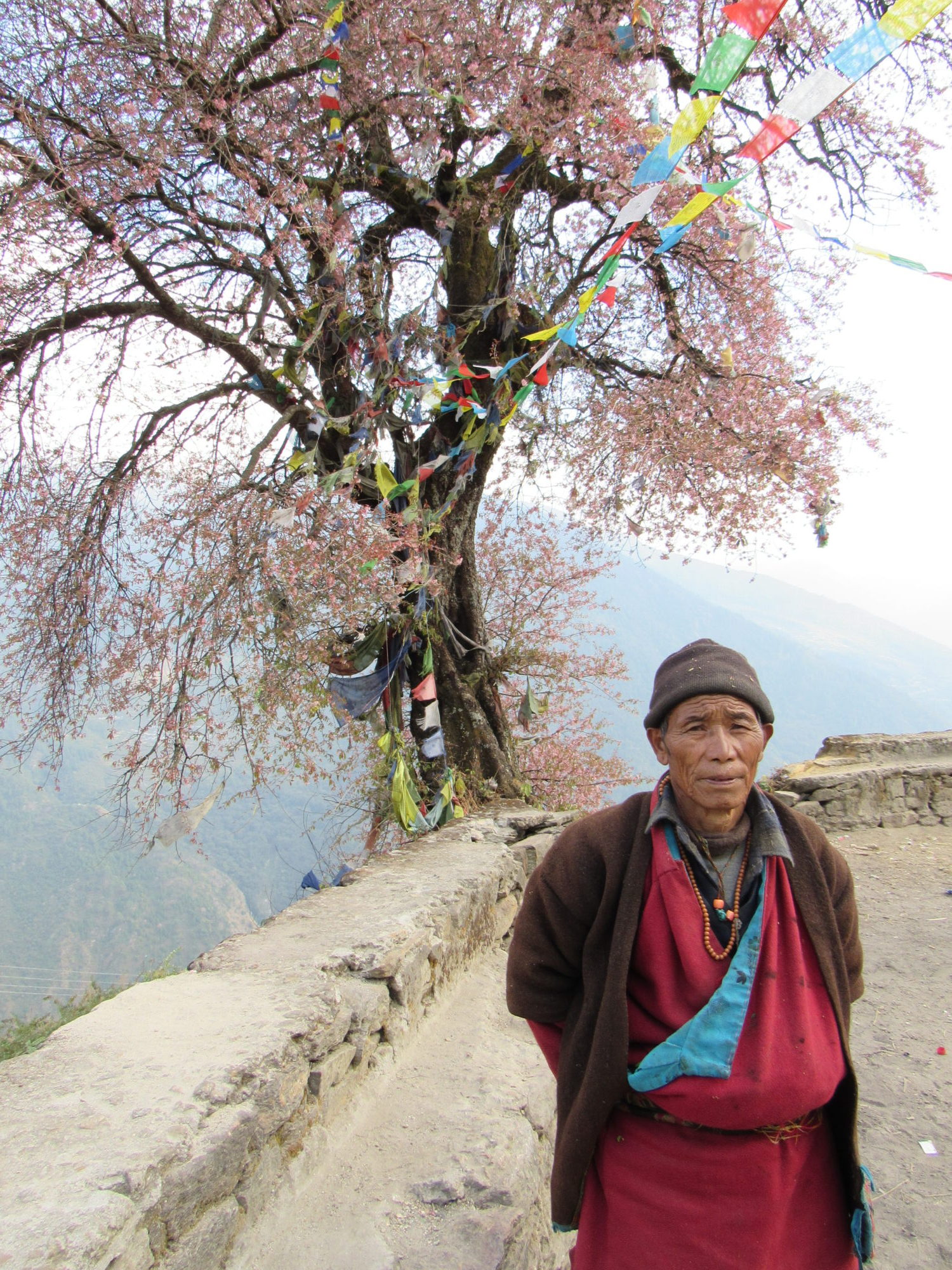


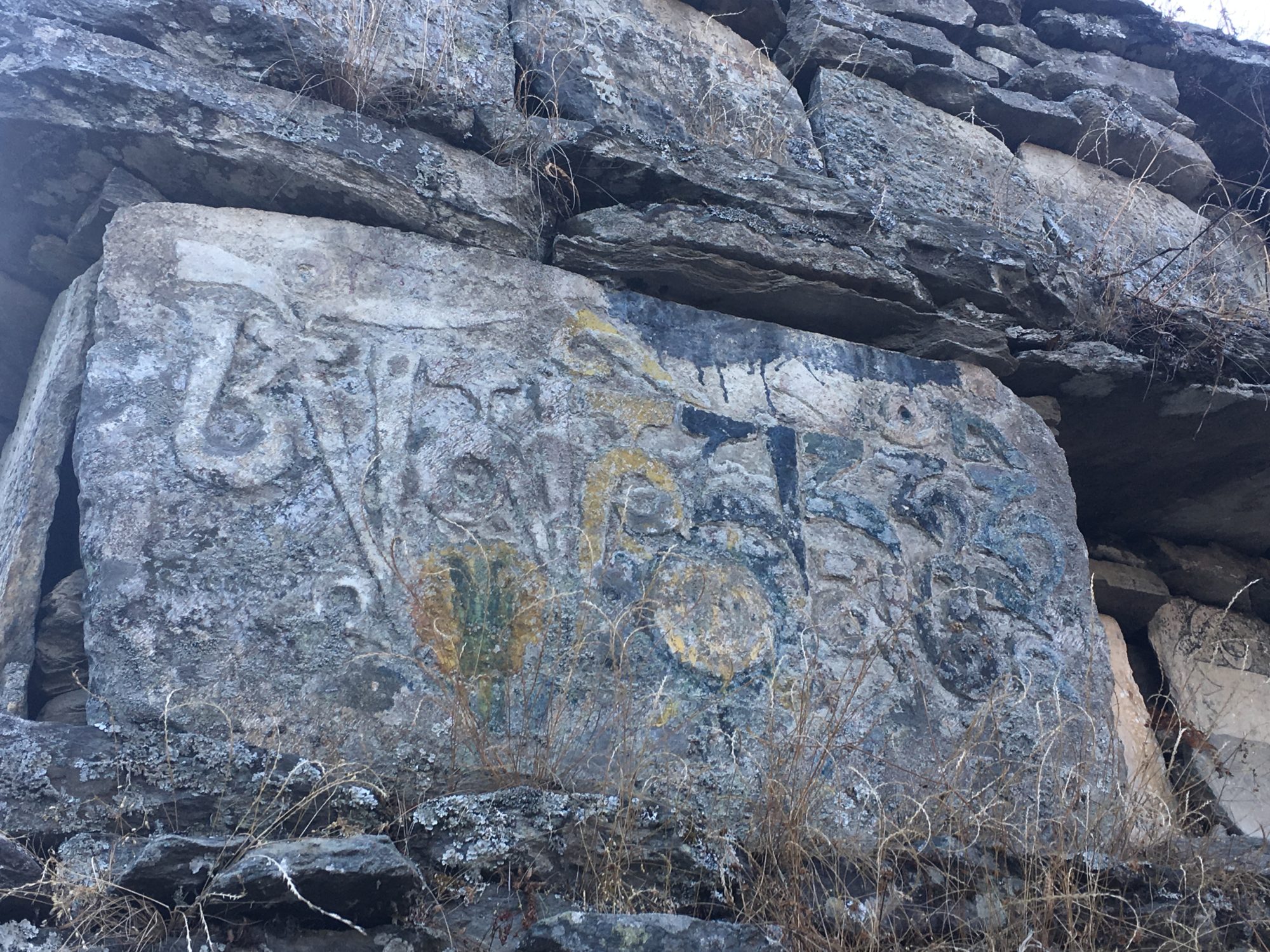
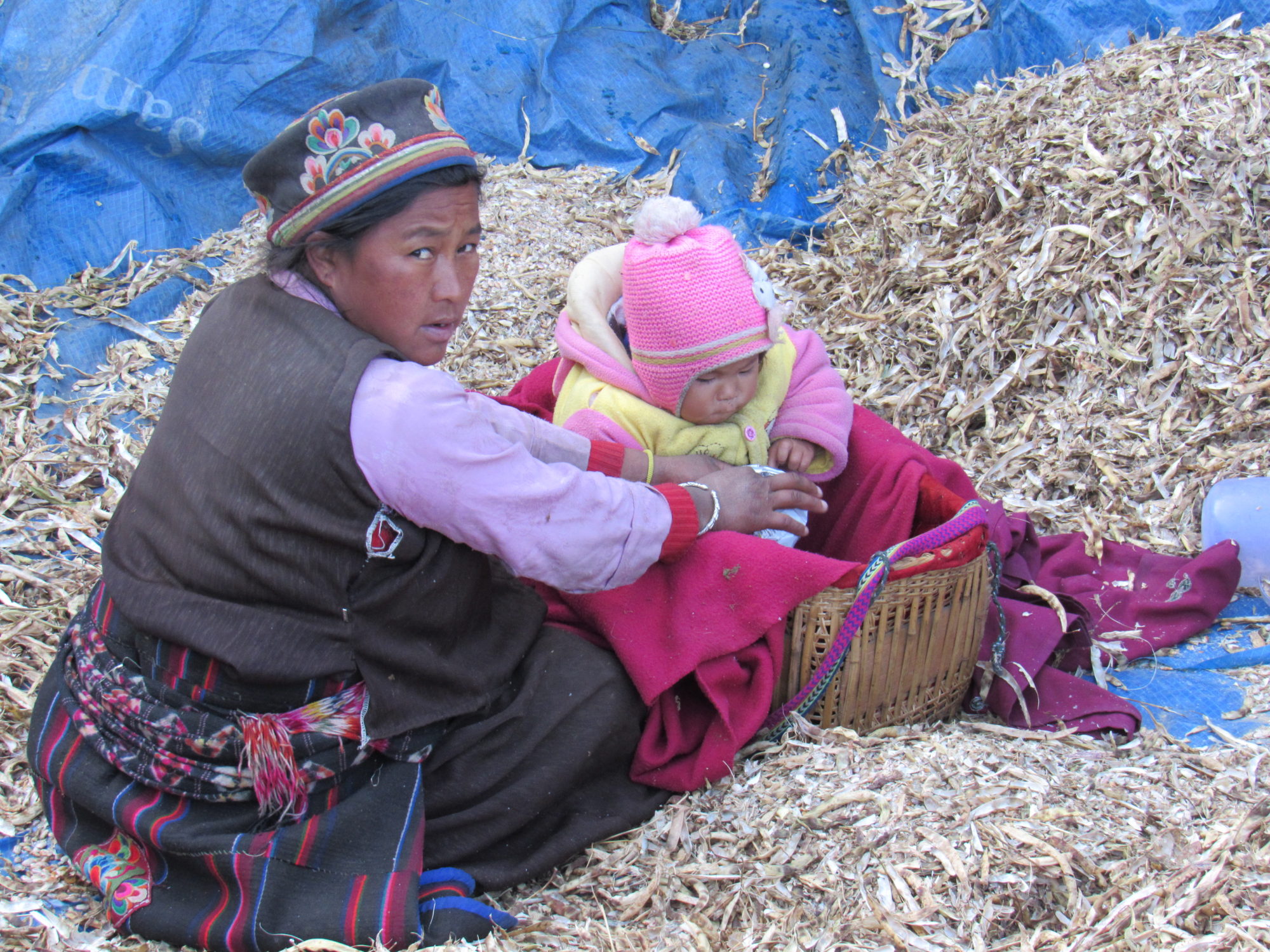
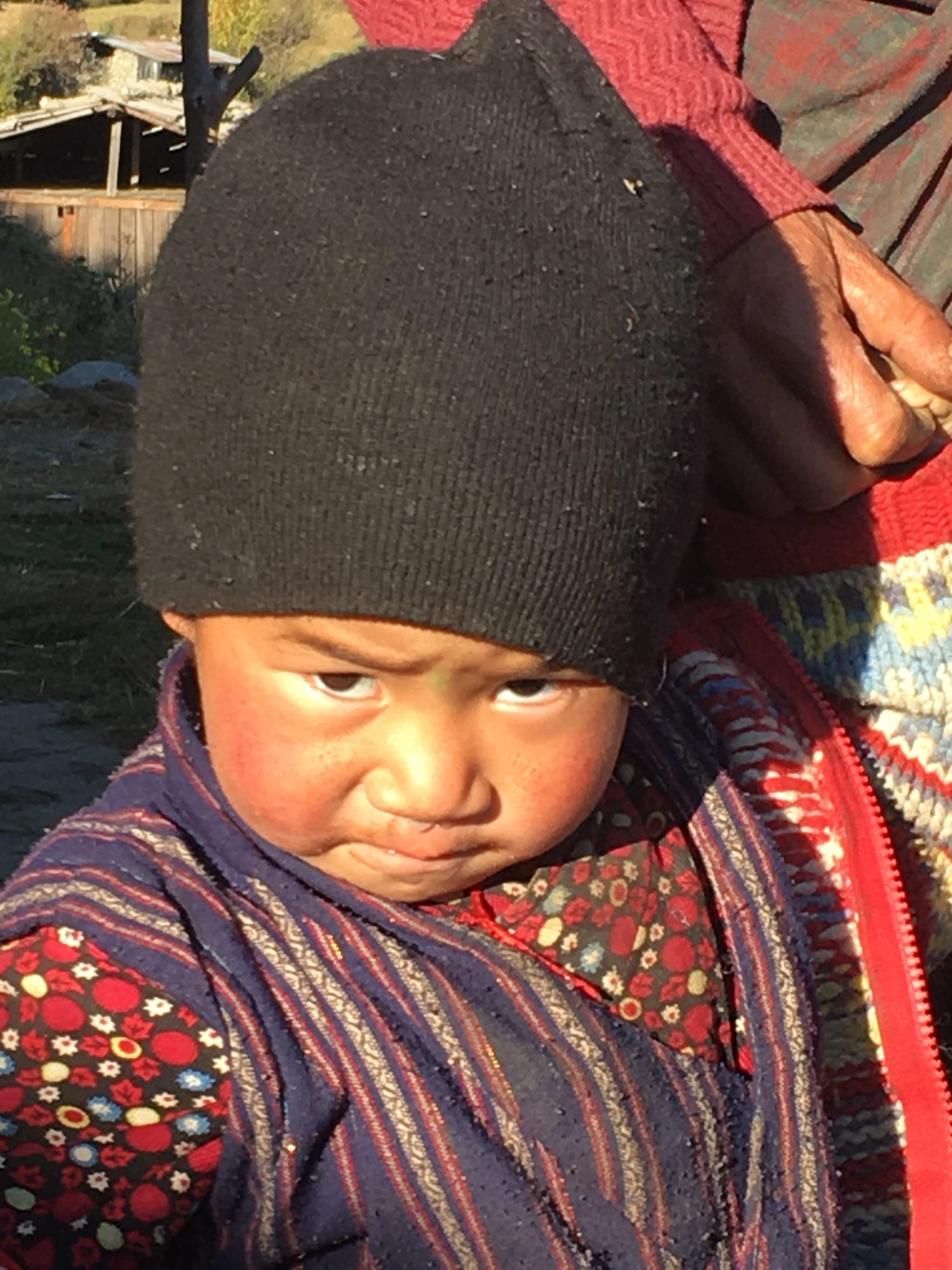
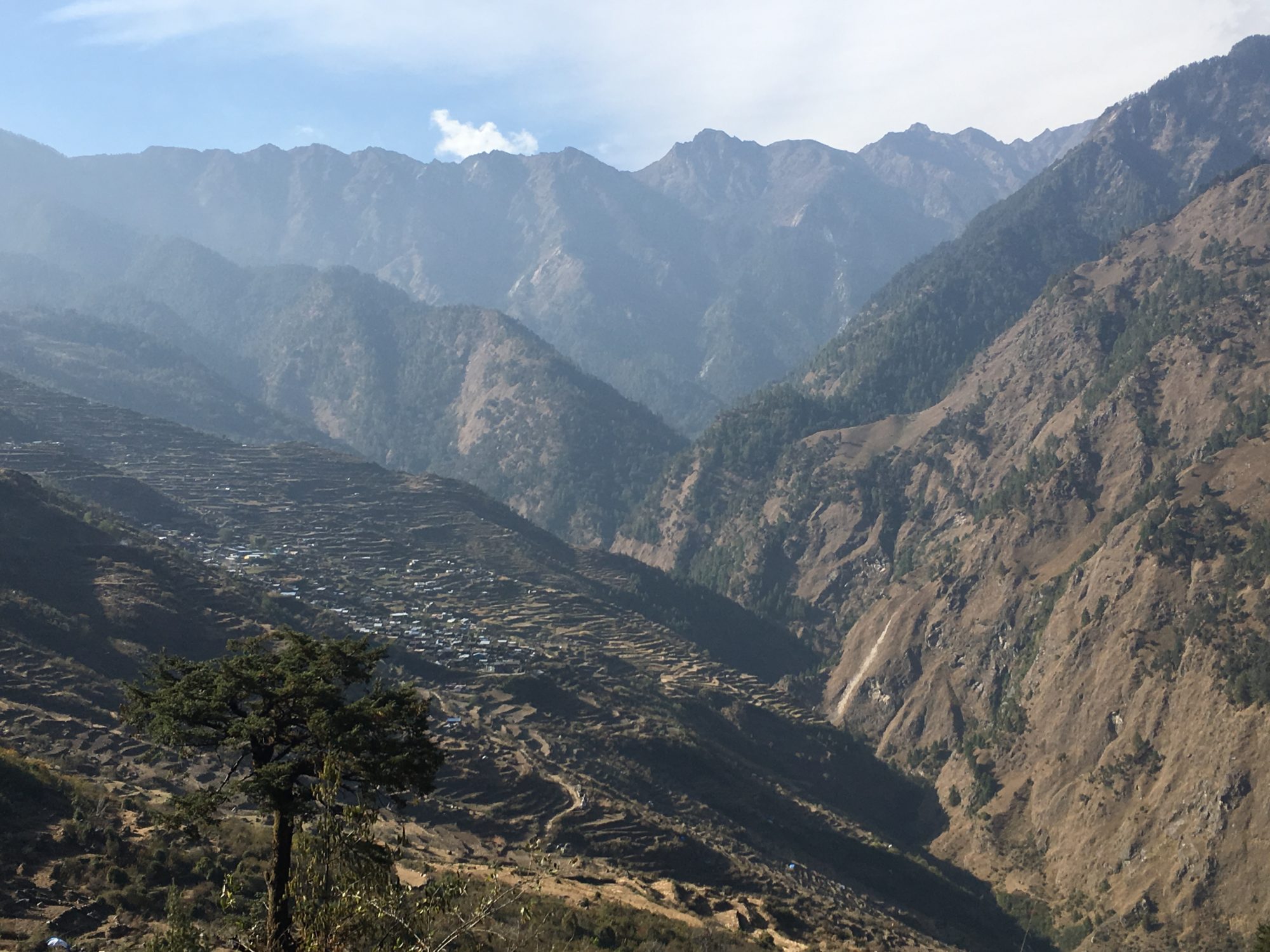

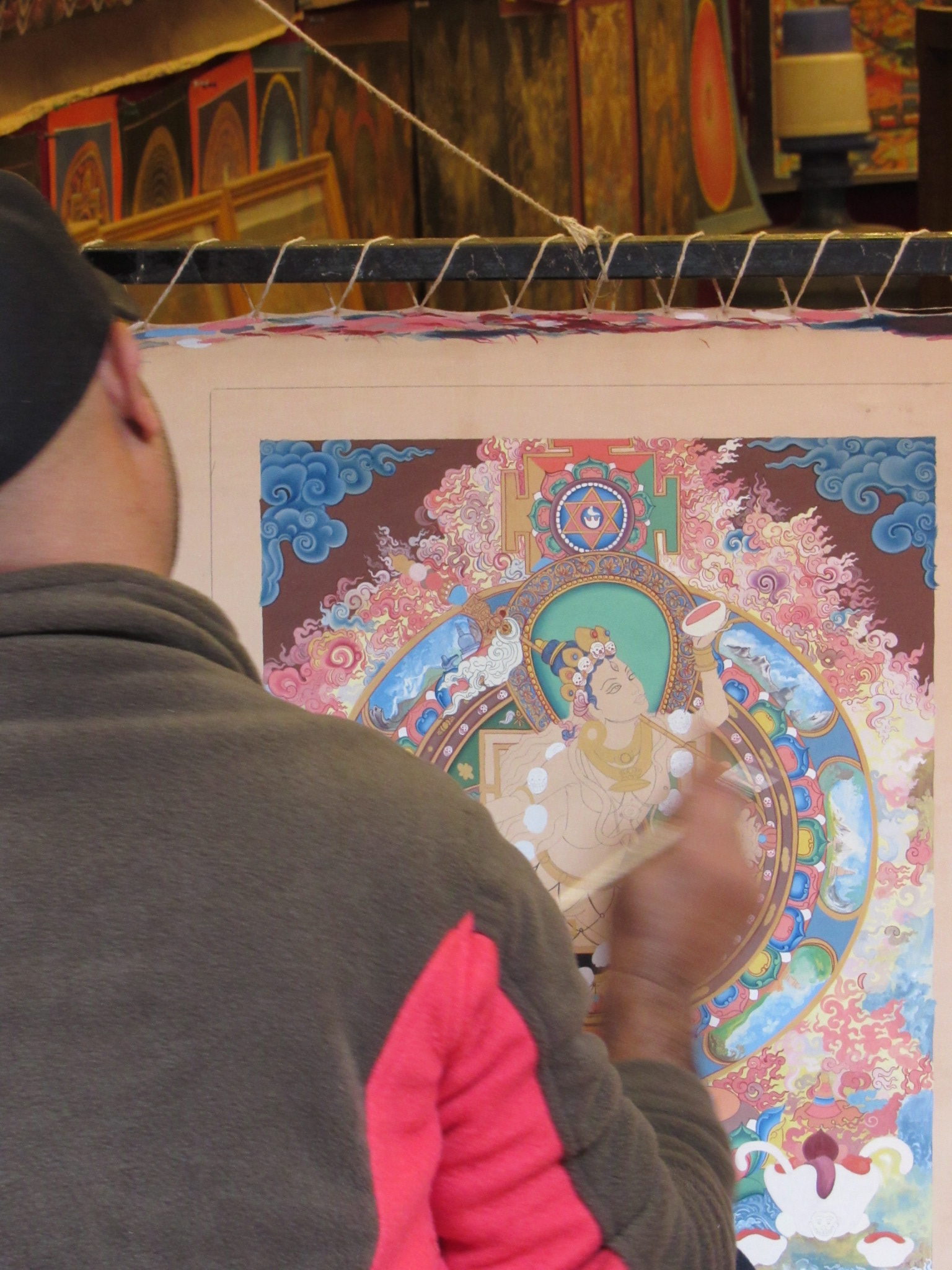

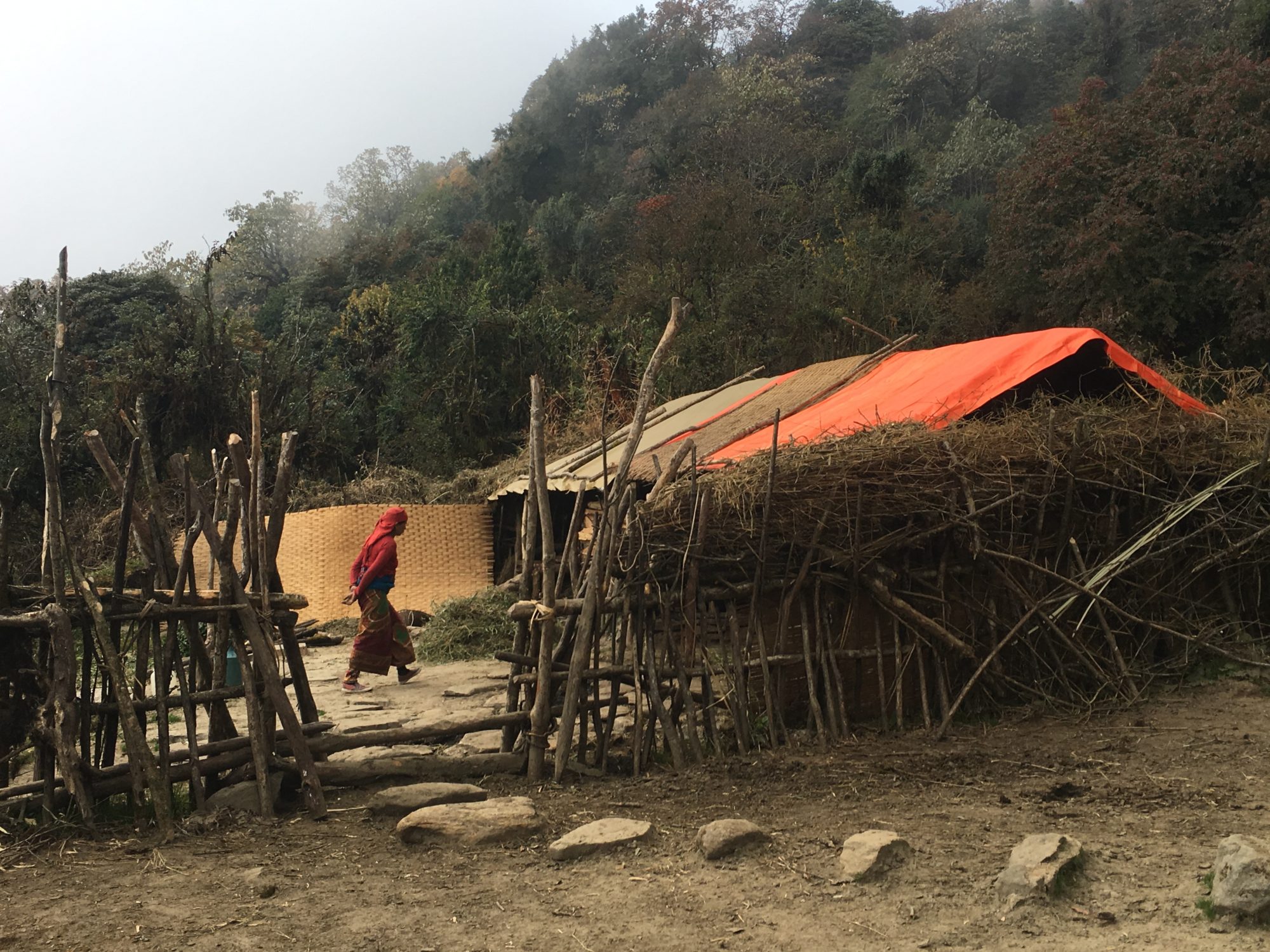
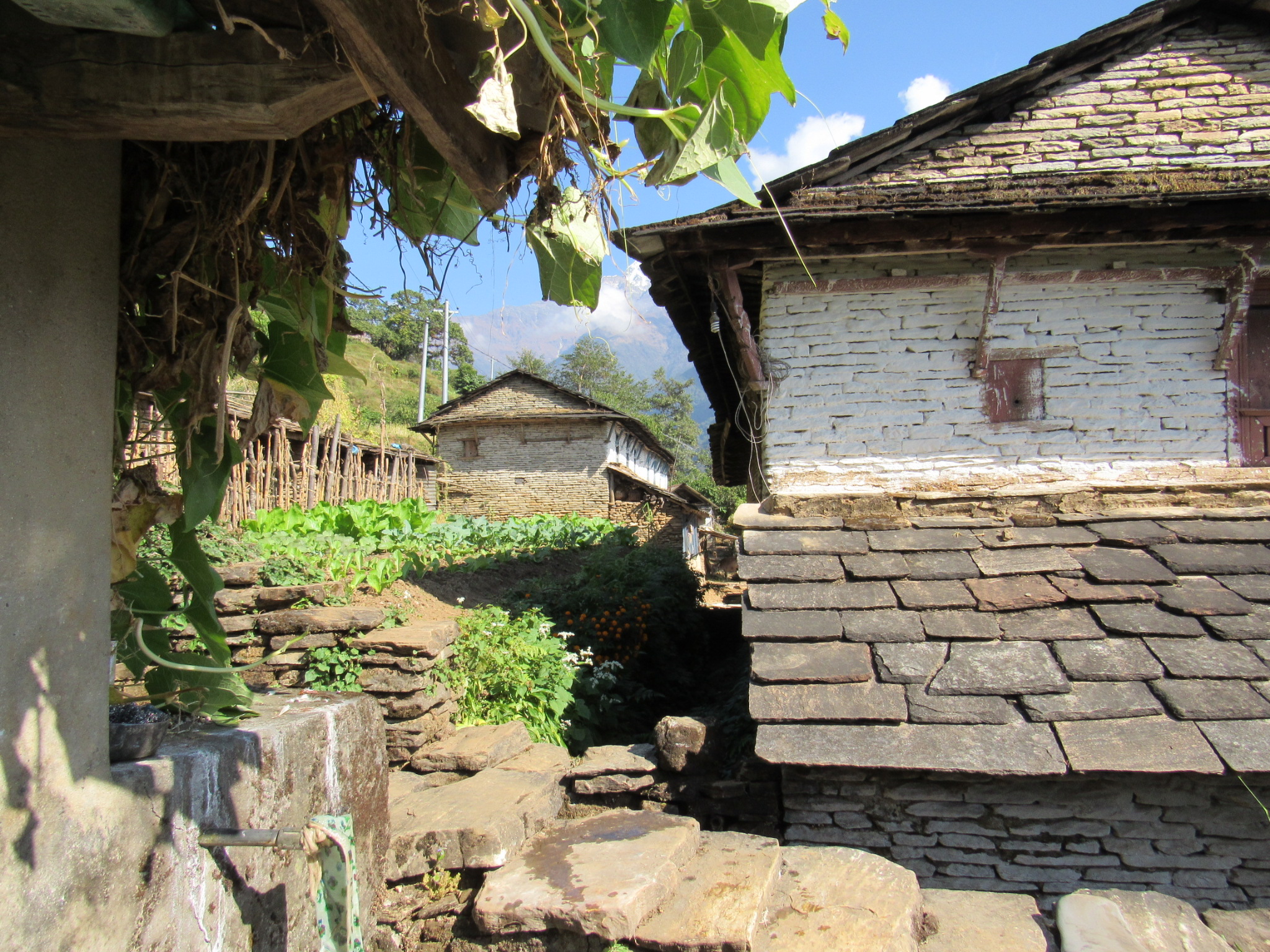

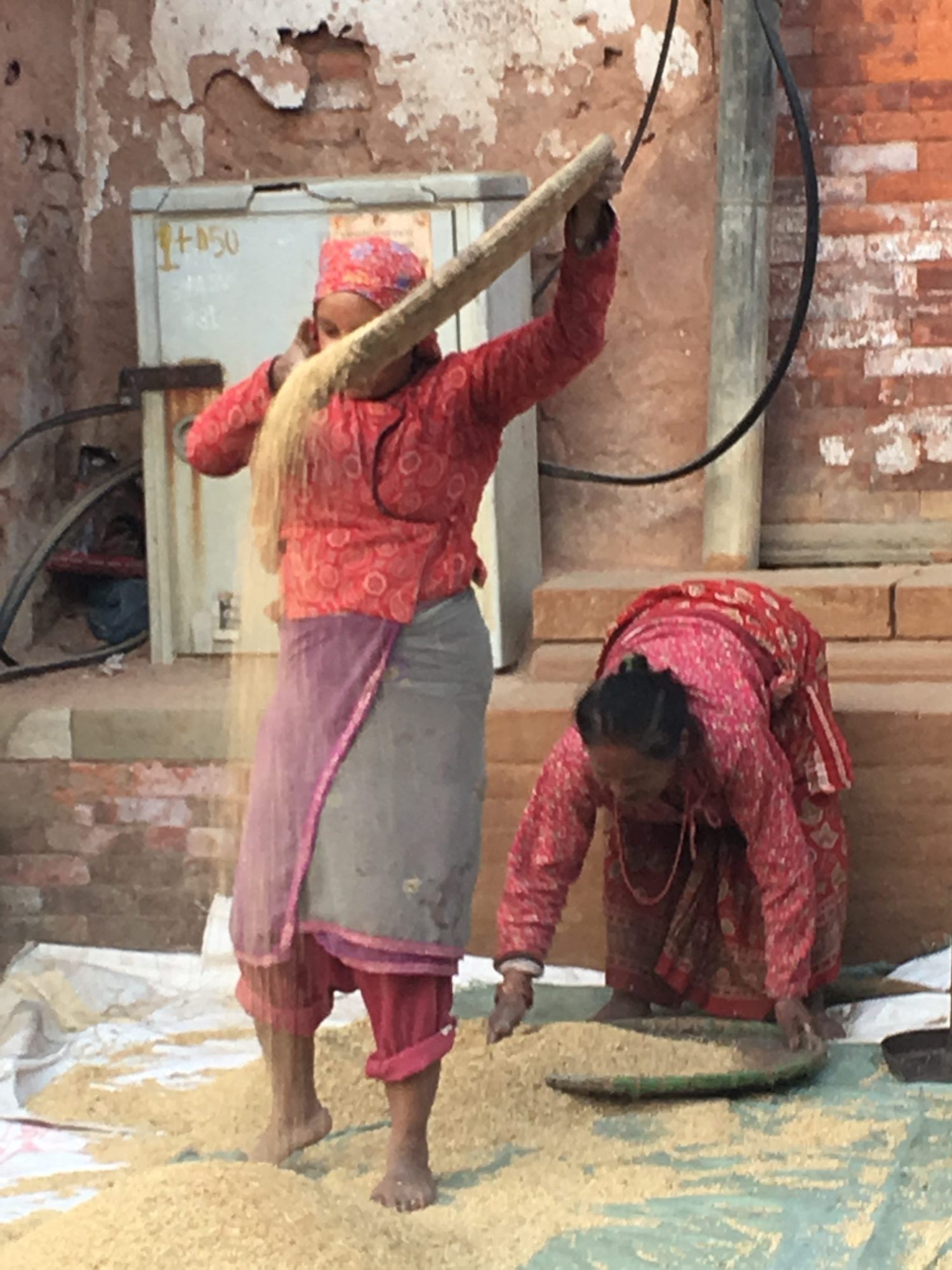
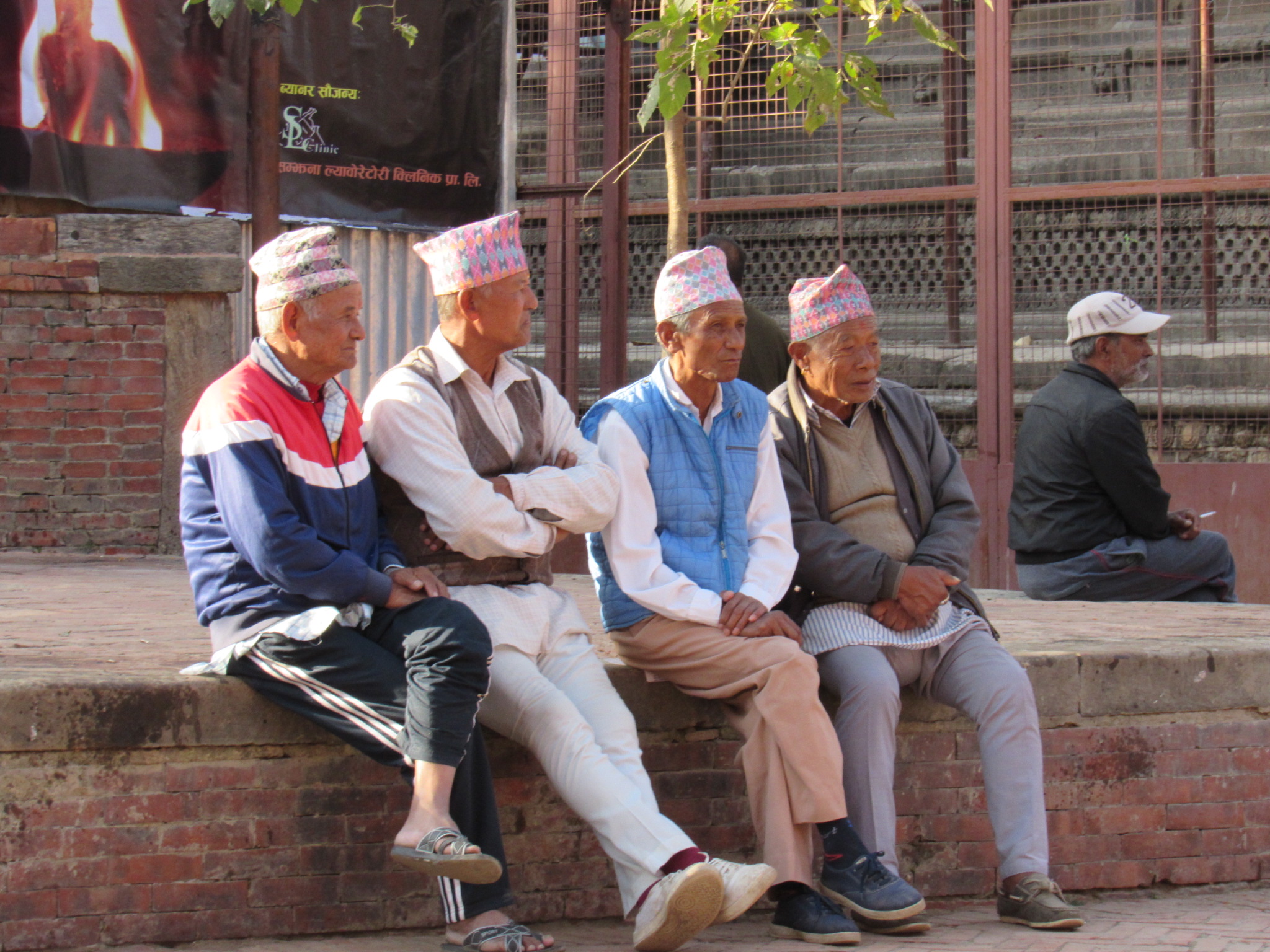
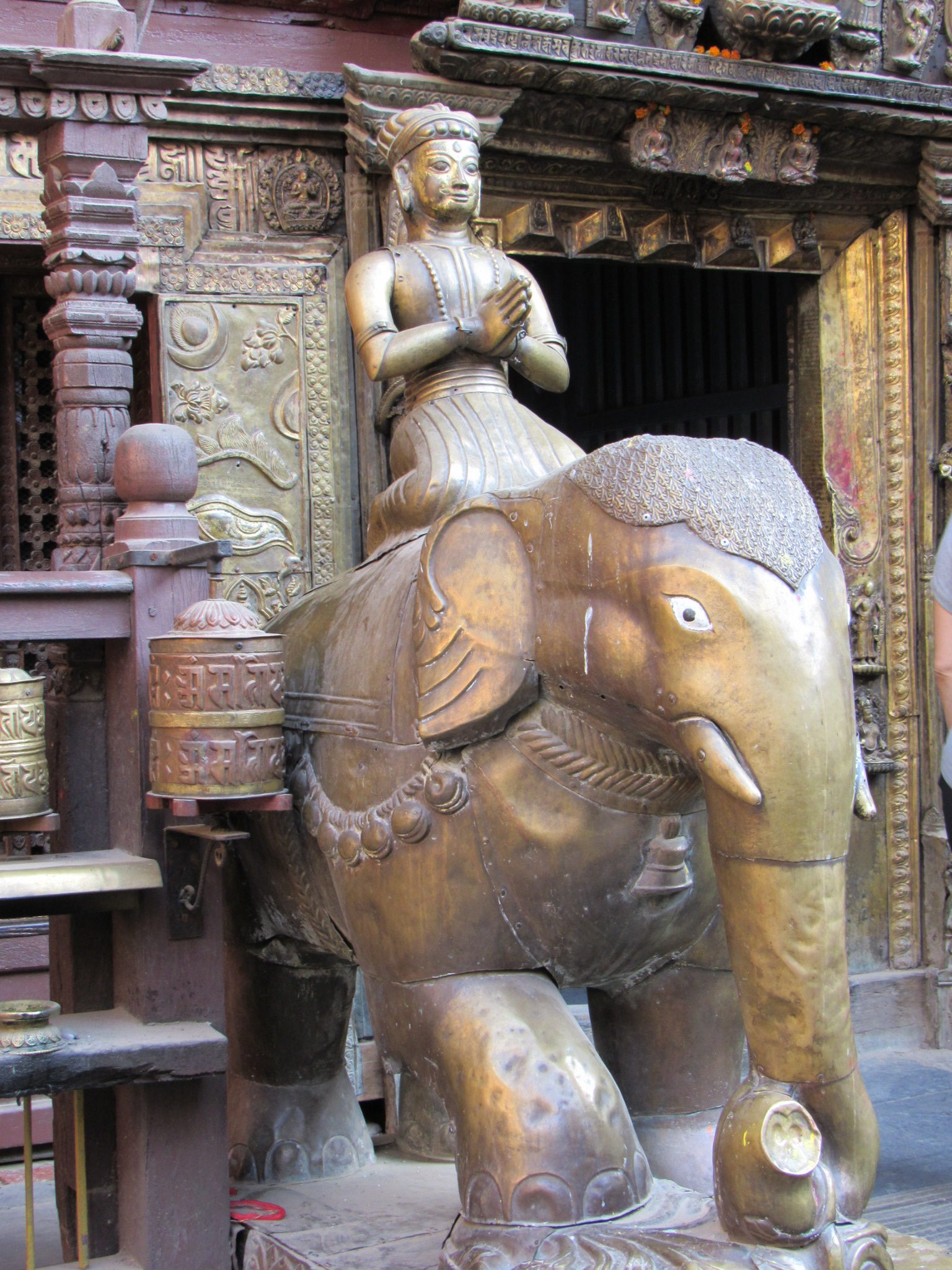
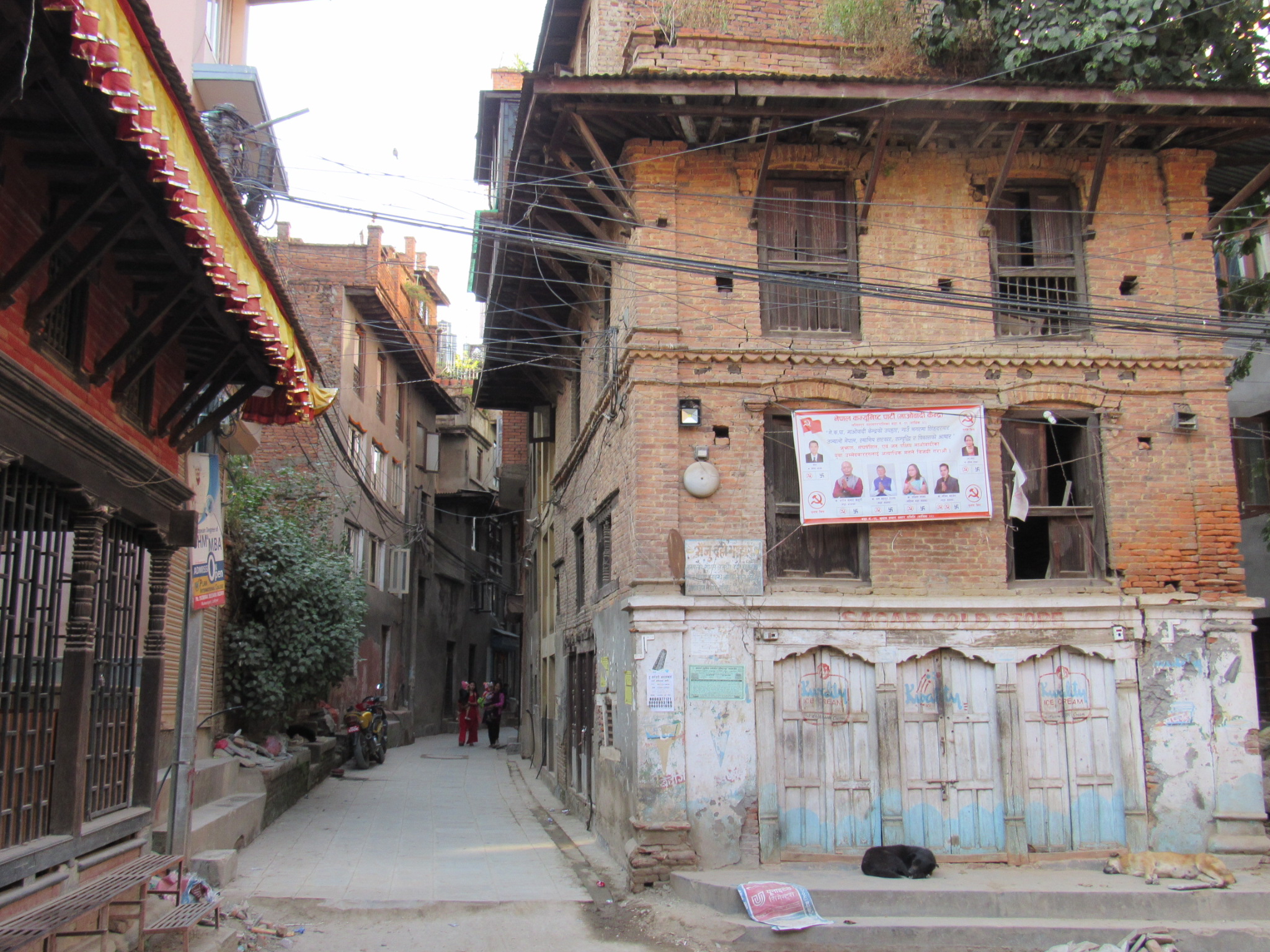
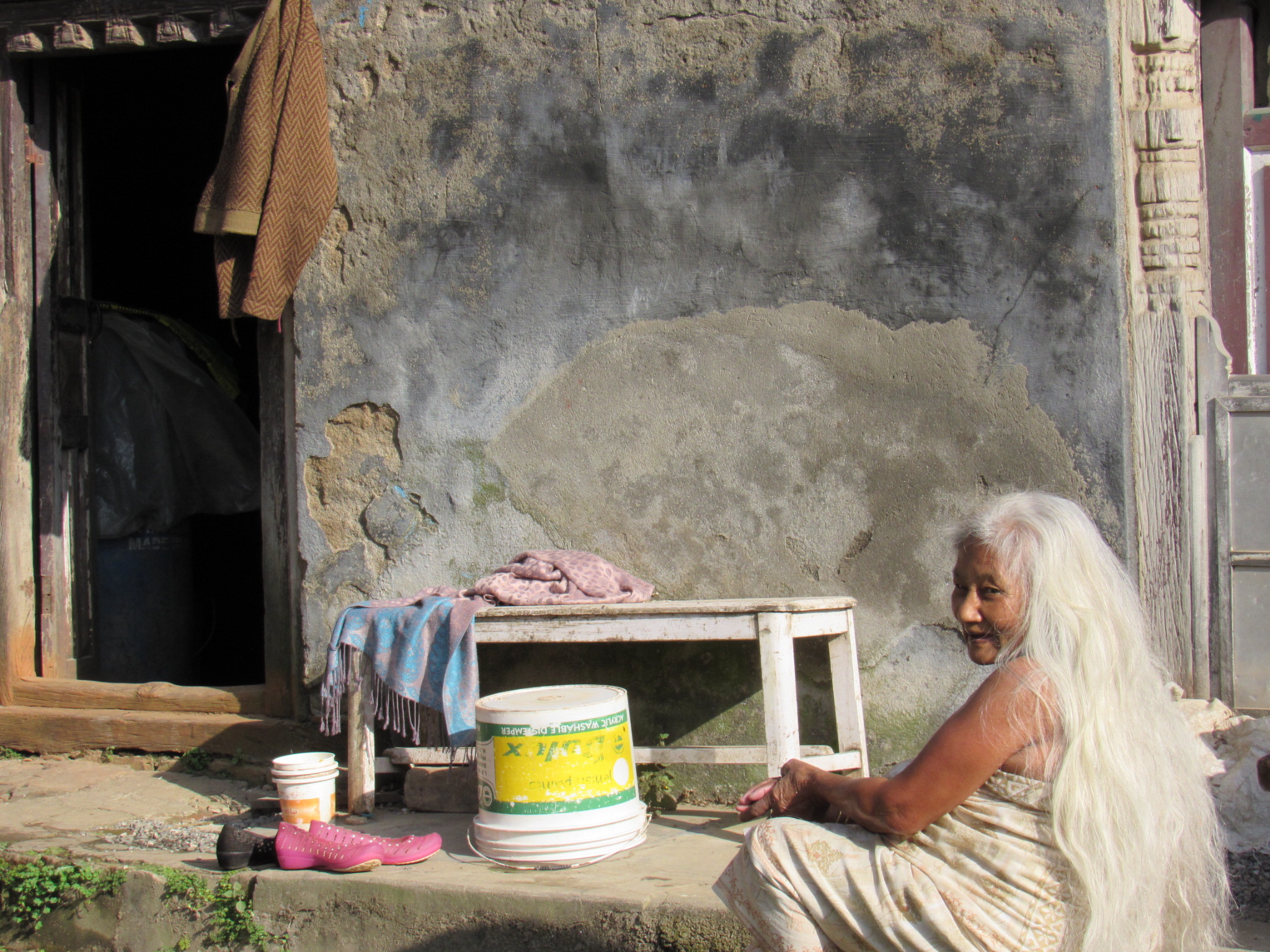

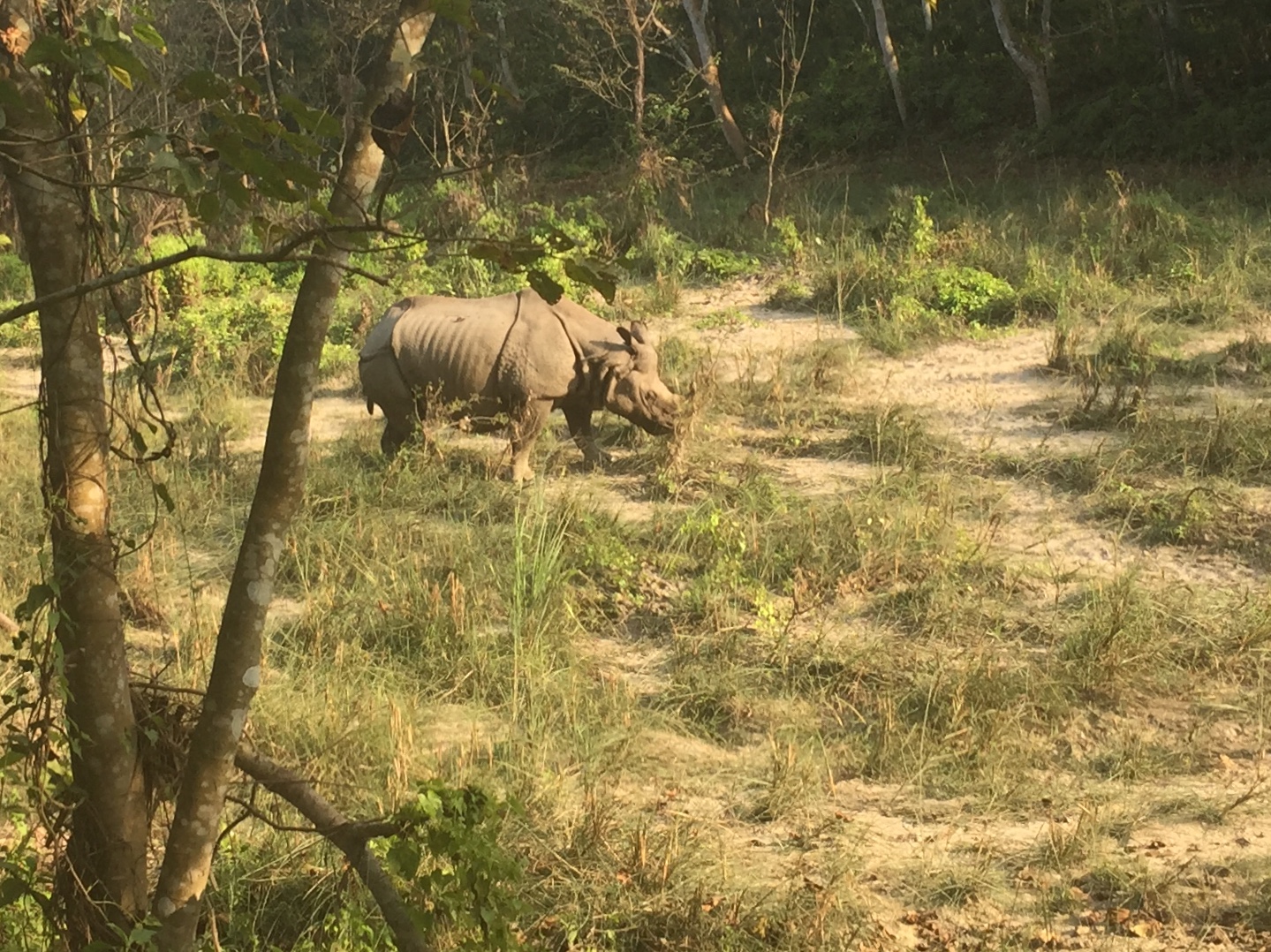
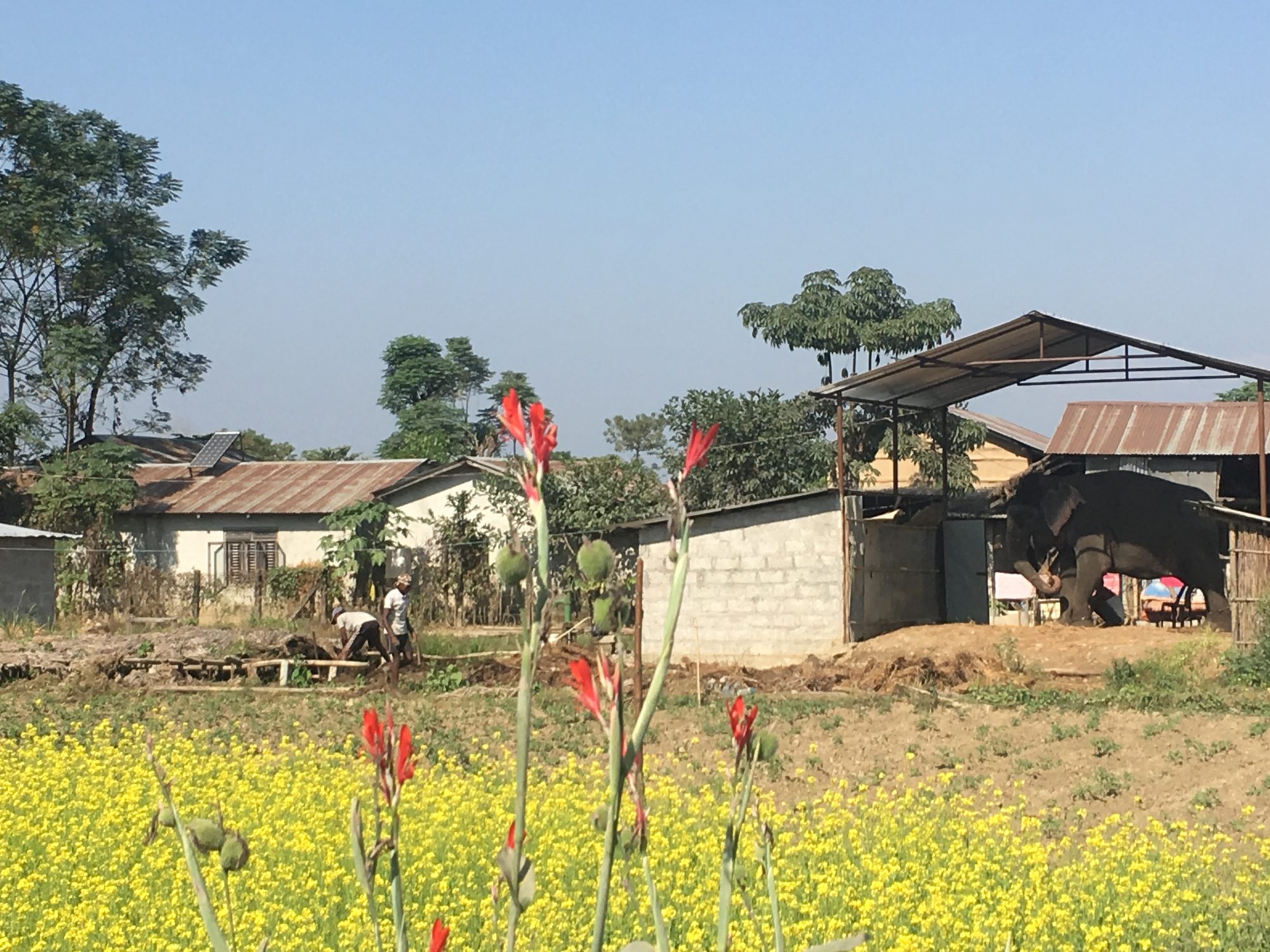

Thank you for this lovely look at the Nepalis. Namaste.
Kathy
Namaste Kathy! I’m so looking forward to seeing you. Hope you’re still planning on coming to St. John this year!